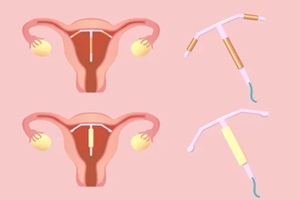 Getting an IUD inserted can be an uncomfortable experience. Many people feel cramping and pain during and after the insertion procedure as their bodies adjust. This discomfort is common and expected, though the severity and duration vary from person to person.
Getting an IUD inserted can be an uncomfortable experience. Many people feel cramping and pain during and after the insertion procedure as their bodies adjust. This discomfort is common and expected, though the severity and duration vary from person to person.
The good news is that many effective remedies help relieve IUD cramping while your body heals.
What to Expect After IUD Insertion
Cramping and discomfort after getting your IUD are normal. During the insertion, your doctor opens your cervix so the IUD can be placed into your uterus. The cervical manipulation and the presence of a foreign object can cause temporary irritation.
You may feel moderate cramping when the IUD is inserted, which may last a few minutes to a few hours afterward. Many find over-the-counter pain medications provide sufficient relief once they leave the doctor’s office.
However, don’t be surprised if you continue having intermittent cramping that feels similar to menstrual cramps over the next few days or weeks. Spotting is also common during this time frame. Discomfort usually decreases day by day but can potentially persist at a low level for 3-6 months after insertion.
While inconvenient, remember that this is your body’s natural reaction, and it will fade. Pay attention to any worsening of symptoms, though, which may signal a problem requiring medical attention.
Methods to Help Ease Discomfort
When trying to find relief from post-IUD cramping, over-the-counter (OTC) medication is often the first line of defense:
- Ibuprofen (Motrin, Advil) – This anti-inflammatory drug works well for relieving cramping and inflammation. Take 600-800 mg every 6-8 hours as needed.
- Acetaminophen (Tylenol) – While not technically an anti-inflammatory, acetaminophen can reduce IUD cramping by blocking pain signals to the brain. Take 325-650 mg every 4-6 hours as necessary.
- Naproxen (Aleve) – Naproxen is another anti-inflammatory option similar to ibuprofen you can alternate with for pain relief. Start with 220-500 mg initially, and then 110-275 mg every 8-12 hours.
In addition to oral medication, you may find comfort using topical options such as heating pads and hot packs over your lower abdomen and back. The heat will help relax the tense muscles, easing discomfort.
Be sure to take it very easy for the first 1-2 days following your IUD insertion. This gives your body adequate rest and recuperation to heal. Light exercise is fine, but avoid anything strenuous. Wear loose, comfy clothing and permit yourself to lounge if needed.
It’s also essential to continue focusing on healthful nutrition and proper hydration during your recovery. Concentrate on eating fresh, nutrient-dense foods while limiting inflammatory triggers such as sugar, fried items, and alcohol, which can worsen cramping.
Lifestyle Adjustments to Aid Healing
 Making certain lifestyle tweaks during your initial recovery from an IUD insertion can optimize your progress and comfort.
Making certain lifestyle tweaks during your initial recovery from an IUD insertion can optimize your progress and comfort.
Give your body about 3-5 days before resuming vigorous workouts, and wait 1 week before having intercourse. This allows inflammation to resolve and lowers the risk of infection.
Be attentive to getting plenty of downtime, too. Nurture yourself by turning in early, reducing obligations, and finding healthy stress outlets such as light yoga, mindfulness, or music. Think of it as granting your body the grace period to bounce back.
Warning Signs to Watch For
While post-insertion cramping and minor bleeding/spotting are very standard, there are some red flag symptoms to watch out for indicating a potential complication:
- Severe pain that suddenly worsens and does not respond to medication
- Bleeding heavily enough to soak through a pad or tampon hourly
- Bleeding that contains large clots
- Foul-smelling vaginal discharge
- Fevers over 100.4°F
If you experience any of these warning signs, promptly contact your healthcare provider to rule out problems such as infection, perforation, or expulsion. They can also examine and ensure that your IUD remains properly positioned. If these worrisome symptoms arise, take them seriously and do not wait.
When to Contact Your Doctor
You should touch base with your gynecologist about persistent cramping under the following circumstances:
- Cramping worsens instead of improving over the first 1-2 weeks
- Discomfort continues severely impacting daily function after 4-6 weeks
- Menstrual flow becomes extremely heavy with clots
- You suspect pregnancy due to signs such as nausea/vomiting and missed period
While most devices settle in without incident after about three months, every woman’s response is unique. Abnormal pain levels, sudden changes in bleeding patterns, or confirming that the IUD did not stay in the correct position all warrant medical assessment.
Seeking Long-Term Relief
Suppose your IUD cramps linger longer than the typical 3-6 month window. In that case, there are some supplemental options your doctor may recommend trying:
 Vitamin B1 – Also called thiamine, vitamin B1 helps regulate nerve signals and muscle contractions, which can ease persistent cramping. Typical dosing is 50-100 mg daily.
Vitamin B1 – Also called thiamine, vitamin B1 helps regulate nerve signals and muscle contractions, which can ease persistent cramping. Typical dosing is 50-100 mg daily.- Omega-3 Fatty Acids – Anti-inflammatory omega-3s found in fish and flax oils can gradually help calm an irritated uterus when taken regularly in high enough amounts. Aim for a minimum of 2000 mg a day.
- Magnesium – This essential mineral is depleted during stress, contributing to tense uterine muscles and cramping. Restoring healthy magnesium levels by taking 300-400 mg daily rectifies muscle tightness.
For patients needing significant cramp relief, a doctor may prescribe muscle relaxants, nerve pain agents, or hormonal treatments. Alternative medicine approaches such as acupuncture also help some women find lasting alleviation of stubborn discomfort.
Work with Raleigh Gynecology & Wellness for the Ultimate in Post-IUD Care
If troubling side effects arise with your IUD or questions emerge about ideal management for your situation, Raleigh Gynecology & Wellness has knowledgeable clinicians who offer personalized guidance. We have extensive training in all types of birth control along with expertise in treating post-insertion difficulties.
Contact us today at (919) 636-6670 or online to find out how we can assist you in easing discomfort or deciding if a different contraceptive method better fits your needs.
